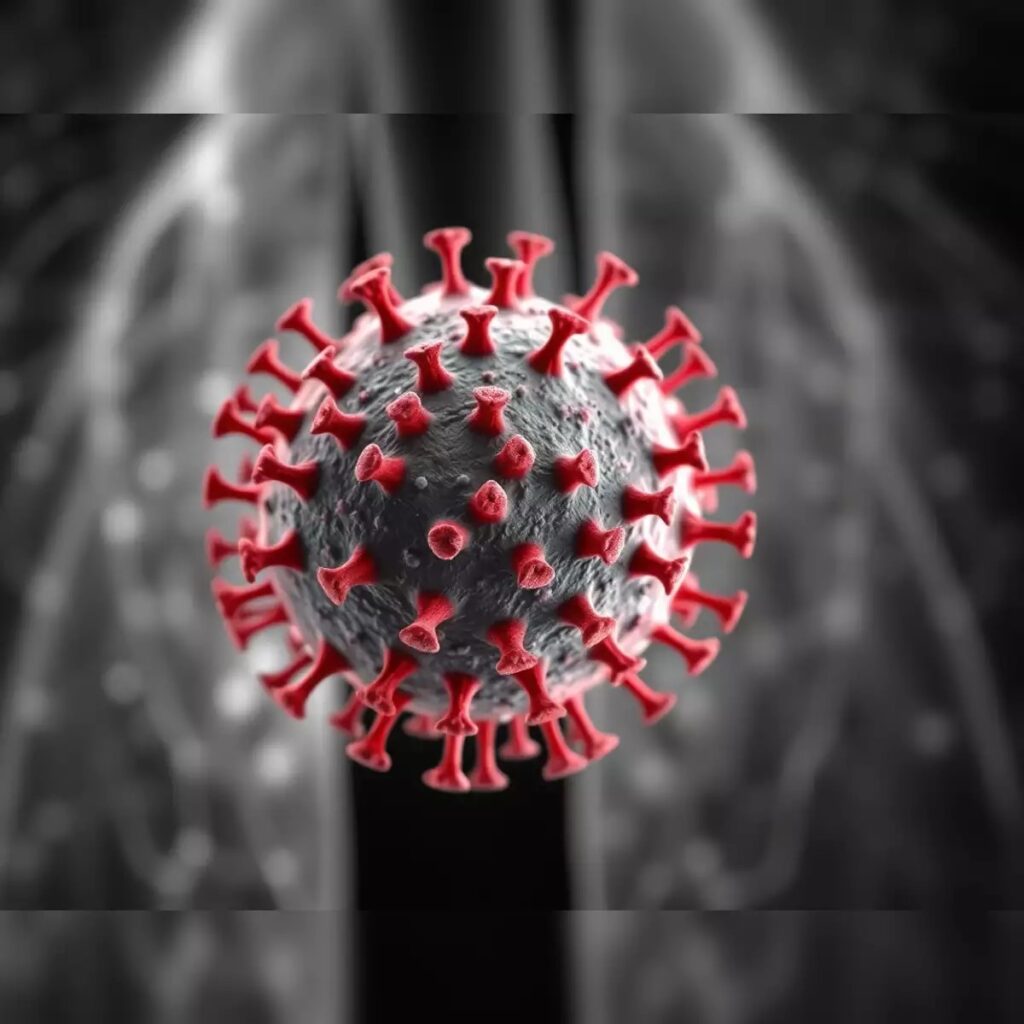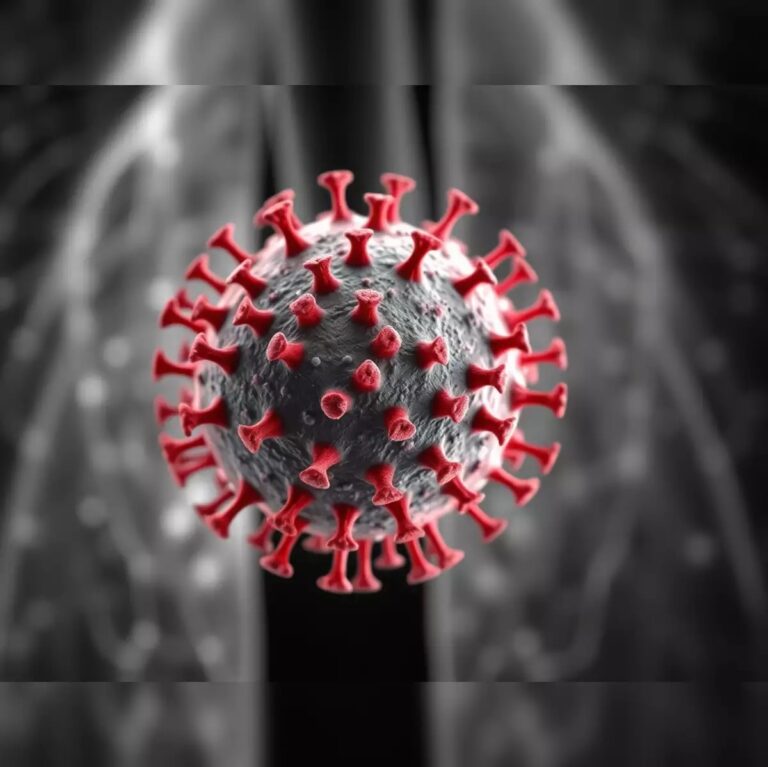
The Human Metapneumovirus (HMPV) is a respiratory virus that has gained significant attention for its impact on vulnerable populations, including young children, older adults, and immunocompromised individuals. Despite being discovered relatively recently, HMPV is one of the leading causes of respiratory infections worldwide, and its seasonal outbreaks make it a key concern for healthcare systems.
In this comprehensive guide, we’ll delve into the origins, symptoms, transmission, diagnosis, treatment, and prevention of the HMPV virus.
Table of Contents
What is the HMPV Virus?
The Human Metapneumovirus (HMPV) was first identified in 2001 by researchers in the Netherlands, although studies suggest it has been circulating in humans for decades. It belongs to the Paramyxoviridae family, which also includes respiratory syncytial virus (RSV), measles, and mumps.
HMPV primarily targets the respiratory system, causing infections that range from mild cold-like symptoms to severe illnesses such as bronchitis and pneumonia. While it can affect individuals of all ages, certain groups are at higher risk of complications.
Global Prevalence
HMPV is a significant contributor to respiratory illnesses worldwide. Studies indicate that nearly all children are exposed to HMPV by the age of 5, with reinfections occurring throughout life. The virus is responsible for seasonal outbreaks, typically peaking in late winter and early spring, similar to the flu and RSV.
How Does HMPV Spread?
HMPV is highly contagious and spreads through respiratory droplets. Here’s how the transmission occurs:
- Direct Contact: Close interaction with an infected individual, such as shaking hands or hugging, can spread the virus.
- Respiratory Droplets: When an infected person coughs or sneezes, the virus is released into the air and can be inhaled by others.
- Contaminated Surfaces: Touching surfaces or objects contaminated with the virus and then touching your face, especially the eyes, nose, or mouth, can lead to infection.
The virus can survive on surfaces for several hours, making hygiene a critical factor in prevention.
Symptoms of HMPV
The severity of HMPV symptoms can vary widely depending on the individual’s age, immune status, and overall health.
Mild Symptoms
- Runny or congested nose
- Cough
- Fever
- Sore throat
- Fatigue
- Headache
Severe Symptoms
In high-risk groups, HMPV can lead to more serious complications such as:
- Bronchitis: Inflammation of the bronchial tubes, causing persistent coughing and difficulty breathing.
- Pneumonia: Infection of the lungs, leading to symptoms like chest pain, high fever, and shortness of breath.
- Wheezing: A high-pitched whistling sound while breathing, indicating airway obstruction.
Severe cases often require medical intervention and, in some instances, hospitalization.
Who is Most at Risk?
While HMPV can infect anyone, certain populations are more vulnerable to severe complications:
Infants and Young Children:
HMPV is a leading cause of respiratory infections in children under the age of 5. Their developing immune systems make them particularly susceptible to severe symptoms.
Older Adults:
Individuals aged 65 and above are at higher risk of developing complications like pneumonia and bronchitis.
Immunocompromised Individuals:
Those with weakened immune systems, including cancer patients undergoing chemotherapy, individuals with HIV/AIDS, and organ transplant recipients, are more likely to experience severe illness.
People with Chronic Respiratory Conditions:
Individuals with asthma, chronic obstructive pulmonary disease (COPD), or other lung conditions are at an elevated risk.
How is HMPV Diagnosed?
HMPV infections can be difficult to distinguish from other respiratory illnesses like RSV, influenza, or COVID-19 based on symptoms alone. Medical professionals typically rely on laboratory tests to confirm the diagnosis.
Diagnostic Methods:
- PCR Testing (Polymerase Chain Reaction): Detects the presence of HMPV genetic material in respiratory samples.
- Antigen Testing: Identifies HMPV-specific proteins.
- Viral Cultures: Involves growing the virus in a lab setting to identify it.
Early diagnosis is essential, especially for high-risk individuals, as it allows for timely management of symptoms and prevention of complications.
Treatment for HMPV
Currently, there is no specific antiviral treatment for HMPV. Management focuses on alleviating symptoms and supporting the body’s natural recovery process.
At-Home Care:
- Hydration: Drink plenty of fluids to stay hydrated and help loosen mucus in the respiratory tract.
- Rest: Adequate sleep and rest help the immune system fight off the infection.
- Over-the-Counter Medications: Pain relievers like acetaminophen or ibuprofen can reduce fever and alleviate discomfort.
Hospitalization:
Severe cases, particularly those involving respiratory distress or pneumonia, may require:
- Oxygen therapy
- Intravenous fluids
- Mechanical ventilation in extreme cases
Prevention of HMPV
Since there is no vaccine for HMPV, preventive measures focus on reducing the risk of transmission and exposure:
Good Hygiene Practices:
- Wash hands frequently with soap and water for at least 20 seconds.
- Use hand sanitizers with at least 60% alcohol when soap is unavailable.
Avoid Close Contact:
- Stay away from people who are sick.
- Maintain a safe distance in crowded areas during peak HMPV seasons.
Disinfect Surfaces:
- Regularly clean high-touch surfaces like doorknobs, light switches, and smartphones.
Wear Masks:
- In crowded indoor spaces, wearing a mask can reduce the risk of inhaling respiratory droplets.
Boost Immune Health:
- Eat a balanced diet rich in vitamins and minerals.
- Stay physically active and get sufficient sleep.
Stay Home When Sick:
- Avoid going to work, school, or public places if you are experiencing symptoms to prevent spreading the virus.
HMPV vs. RSV and COVID-19
HMPV shares many similarities with RSV and COVID-19, including symptoms and modes of transmission. However, they are caused by different viruses, and each has unique characteristics.
| Feature | HMPV | RSV | COVID-19 |
|---|---|---|---|
| Cause | Paramyxoviridae family | Paramyxoviridae family | Coronaviridae family |
| Common Symptoms | Fever, cough, fatigue | Wheezing, difficulty breathing | Fever, cough, loss of taste/smell |
| Seasonality | Late winter/spring | Late fall/winter | Year-round with waves |
| Treatment | Symptom management | Symptom management | Antivirals, vaccines available |
Understanding these distinctions is crucial for proper diagnosis and treatment.
Future Research and Vaccine Development
Efforts are underway to develop a vaccine for HMPV, drawing insights from advancements in RSV and influenza vaccines. Improved surveillance and diagnostic tools are also critical for tracking the virus’s impact and reducing its spread.
As awareness of HMPV grows, public health officials emphasize the importance of education and prevention strategies to mitigate its impact on vulnerable populations.
Conclusion
The Human Metapneumovirus (HMPV) is a serious respiratory virus that deserves more attention due to its potential to cause severe illness in high-risk groups. While there is no specific treatment or vaccine yet, understanding how the virus spreads and adopting preventive measures can significantly reduce its impact.
As research progresses, the hope is that medical advancements will lead to more effective tools for managing and preventing HMPV infections. Until then, staying informed and practicing good hygiene remain our best defenses against this virus.






The website design looks great—clean, user-friendly, and visually appealing! It definitely has the potential to attract more visitors. Maybe adding even more engaging content (like interactive posts, videos, or expert insights) could take it to the next level. Keep up the good work!